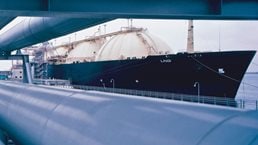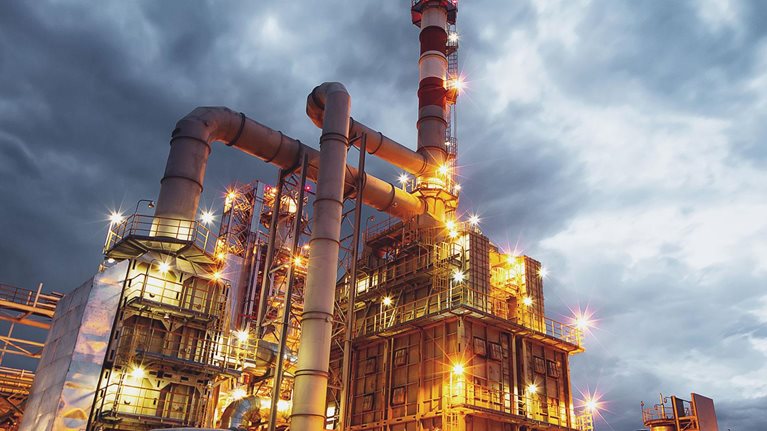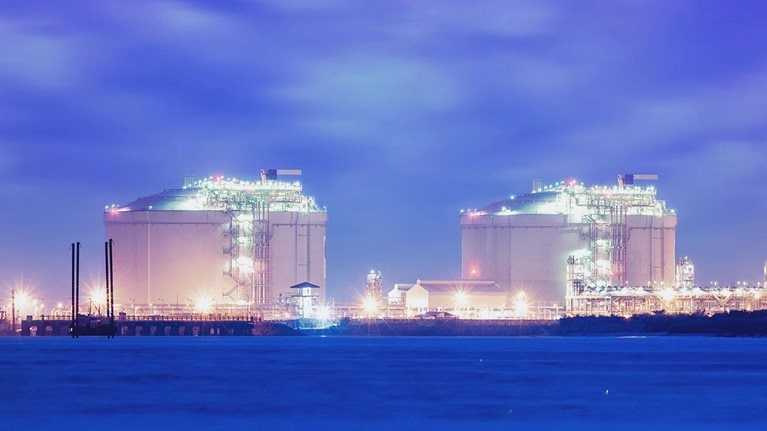Crude-market weakness and the operators’ increased focus on cash-flow management kept up pressure on the oilfield-services-and-equipment (OFSE) sector. Third-quarter 2019 revenues fell in all segments—apart from engineering, procurement, and construction (EPC)—but margins showed some signs of improvement thanks to continuing sector consolidation and restructuring in the US onshore. Concerns over economic growth led to cuts in global oil-demand forecasts for the remainder of this year and into the next, which could hit OFSE revenues going forward.
Key events shaping the third quarter of 2019
Attacks in Saudi Arabia. Mid-September saw a significant attack on Saudi infrastructure. The raid put out of action 5.7 million barrels per day (b/d) of capacity at Abqaiq and Khurais—half the Saudi total. Overall, Saudi output dropped about 1.5 million b/d in September. However, repairs were made quickly, and supply was restored within a few days. The limited impact on long-term oil prices reflects a changing oil and gas world.
Saudi Aramco IPO back on. Saudi Aramco confirmed that it is planning to list on the Riyadh stock exchange (the Tadawul) in what will be one of the world’s biggest IPOs. In early December, Aramco raised $25.6 billion through the IPO, offering 1.5 percent of the company’s shares. Aramco was valued at $1.7 trillion at the time of listing. An overseas listing may follow but seems delayed at this time.
Economic concerns threaten demand growth. China imposed a 5 percent tariff on US crude imports for the first time on August 23, alongside other new trade tariffs imposed by all sides. These tariffs come on top of a 10 percent one on US liquefied natural gas (LNG) and a tariff of approximately 25 percent on liquefied petroleum gas (LPG). This move is expected to affect US export growth and has also, with other new trade tariffs, contributed to a weakening global economic outlook, which is leading to cuts in global oil-demand projections and a more negative outlook for OFSE.
The OPEC-plus supply deal. Low oil prices over recent months have encouraged discussion among the Organization of Petroleum Exporting Countries (OPEC) and its allies over a likely extension and deepening of the current 1.2 million b/d output cut when the group meets in early December. Tight adherence to the existing deal, along with the supply disruption in Saudi Arabia, helped balance weak sentiment from poor economic data and rising US output throughout Q3.
Sector consolidation. M&A and restructuring activities in US onshore continued to build in Q3. Activity included Callon Petroleum’s planned merger, announced in July, with Carrizo Oil & Gas. With financing options sparse, Chapter 11 filings have accelerated. The number of energy-company bankruptcies filed in Q3—20, of which 16 were upstream—increased by 186 percent compared with Q3 2018. The disclosed debt value was about $15 billion, and the filings include Alta Mesa and Permian-focused Halcon Resources. This consolidation and restructuring, together with the adoption of free-cash-flow models by US independents, is expected to slow the growth of US onshore expansion over the coming months—which means continued pressure on the OFSE sector.
Oil and gas market trends in Q3
Demand growth. In Q3, demand rose seasonally to average 100.7 million b/d, up from 98.93 million b/d in Q2, according to OPEC, and in October it slipped to 100.65 million b/d. Growth is slower than most forecasters expected, leading to further cuts in annual demand forecasts for 2019. OPEC now expects total world oil demand to average 99.8 mb/d in 2019 and 100.88 million b/d in 2020—up from 98.82 million b/d in 2018. However, in the most recent reports, OPEC has also been revising downward the anticipated output from a number of non-OPEC producers, including the United States.
Global supply. Global crude and condensate production fell to 100.14 million b/d in September, down from 100.74 million b/d in June, mainly as a result of lower Saudi output. Levels rebounded in October, to 101.85 million b/d. OPEC output was down by 1.32 million b/d in September, to average 28.49 million b/d, bringing the group well below quota. Weaker adherence from some OPEC-plus members raised production in July and August: quota compliance dipped to just 109 percent in August—the lowest level since February. In Russia, compliance fell about 50 percent in August, from over 90 percent in July.
After a hurricane-related July dip to 11.7 million b/d, US output bounced back in August, reaching 12.36 million b/d, up sharply from 11.36 million b/d in August 2018. Leading forecasters—the International Energy Agency (IEA), OPEC, and the US Energy Information Administration (EIA)—are more positive about the outlook for continued US onshore-production growth than many banks and analysts are. The IEA expects this ongoing US strength (despite tightening investment) and weaker demand forecasts to cut the call on OPEC crude in 1H 2020 to 28.3 million b/d, compared with current production of 29.6 million b/d.
Would you like to learn more about our Oil & Gas Practice?
Inventory. Organisation for Economic Development and Co-operation (OECD) oil stocks rose to 2,937 million barrels in August, up from 2,903 million barrels in June (85 million barrels above August 2018 levels). The August figure is just 11 million barrels above the latest five-year average. September saw another slight build, and that trend is expected to continue over coming months unless OPEC-plus makes further cuts.
Crude prices. Apart from a brief spike following the attacks on Saudi targets, the price of crude changed little over the quarter: Brent averaged $63 per barrel in September, compared with $64 per barrel in July. Demand concerns and supply constraints appeared to balance the market, with Mideast Gulf tensions also providing some support. The longer-term forward curve is continuing to flatten—current prices of both Brent and WTI are now less than $3 per barrel above prices for delivery in late 2023—down sharply from above $10 per barrel at the end of Q1 (Exhibit 1).

Gas prices. At the US Henry Hub in late September, gas prices had an end-of-summer rally after record lows through the summer in most regions. But prices remain weak as we head into the winter heating season, with stocks at record highs in both Europe and the United States. International LNG prices remained depressed as new supply-capacity additions continued to outpace slowing demand growth in China and northeast Asia.
Spending and capital expenditures
Upstream Q3 2019 capital expenditures fell to just over $63 billion, from $66 billion in Q2 2019—just marginally lower than the $64 billion in Q3 2018 (Exhibit 2).

In North America, upstream spending continues to slow; Barclays now expects US capital expenditures to fall 2 percent this year, including a 7 percent drop among shale-focused independents. Nevertheless, output continues to rise, albeit at slower rates than last year. The cuts are driven by demands from investors—partly inspired by an increased focus on drilled but uncompleted (DUC) wells—that companies should live within their cash flows and return cash to shareholders rather than reinvest or drill more wells. In Q3 calls, upstream executives indicated that they are focused on balance sheets—reining in spending, cutting capital expenditures, paying down debt, and preparing to produce profitably at $50 to $55 per barrel of oil for some time.
However, most of those reports came from independents, and the growing share of the majors is helping to support activity. ExxonMobil’s oil and gas output in the Permian averaged 293,000 barrels of oil equivalent per day (boe/d) in Q3 2019, up 72 percent on Q3 2018. Chevron dismissed rising concerns about the longevity of the shale boom. “We see a long, healthy pace of activity in the Permian and Texas for decades to come,” said Steve Green, president of Chevron’s North American business.
International spending eased back after solid increases earlier in the year. Exploration and production (E&P) investment outside the United States is expected to rise 5 percent. Brazil and the Middle East were tagged as hotspots, and Argentina, Bolivia, and Mexico face political uncertainty. Germany’s Siemens expects revenue from its oil and gas division in Brazil to double in 2020 over 2018 levels.
OFSE market performance
OFSE revenues fell in all segments as operators continued to drive down costs. But margins—helped by reduced capacity and tighter operating models, especially in the US onshore sector—improved in all segments, apart from EPC.
Looking at the key OFSE metrics
North American rig count. According to Baker Hughes, the rig count in North America fell through the summer, from 1,083 in the first week of July to 999 in the last week of September. Most of the drop occurred in September (Exhibit 3). Since the end of Q3, the count has fallen a bit further, reaching 964 in the first week of November, and further declines are expected. In the Permian, where the bulk of rigs are located, numbers fell by 28, from 443 at the end of March to 415 at the end of September, with little change since. The number of drilled but uncompleted wells fell through the quarter, from 8,181 in June to 7,740 in September. The number of drilling permits issued—a leading indicator for future rig counts—was down sharply.

Across the rest of the world, onshore-rig numbers in Africa, the Asia–Pacific, Eastern Europe, and the Middle East showed little change or marginal gains. Other areas fell back: the numbers in Western Europe, for example, dropped from ten in July to seven in September.
Offshore rig numbers. Over the quarter, the number of offshore rigs fell by five, from 300 in June to 295 in September—up on 248 in September last year and above the recent peak of 289 reached in January. All areas gained on September 2018, with the biggest rises in Western Europe (up 13, at 34), China (up ten, at 38), Latin America (up 12, at 37), and the Middle East (up seven, at 55).
Overall revenue. For the OFSE sector, overall revenues were down 1.4 percent on Q2 (after a 4.7 percent quarterly fall in Q2) and down 1.4 percent on Q3 2018 (Exhibit 4).

Segment performance
Equipment. Revenues fell 3.3 percent in the quarter (which left levels 0.5 percent above those of Q3 last year), after rising 5.4 percent in Q2. At 10 percent, margins (average earnings before interest, taxes, depreciation, and amortization) were 1.4 percentage points up on Q2, after falling 3.2 percentage points in Q2. Margins were down 3.0 percentage points on Q3 2018 (Exhibit 5).

Equipment book-to-bill ratios fell slightly in Q3, bringing them back below the levels seen this time last year. Total returns to shareholders (TRS) since 2015 have fallen from –19.9 percent at the end of Q2 to –26 percent at the end of Q3 (Exhibit 6).

The contraction of US onshore is continuing, with specialists (including Patterson-UTI Energy and RPC) announcing further retirement of fleet. The contraction is expanding beyond fracking specialists, to include proppant sand miners and truckers (the price of their commodity has fallen sharply in recent months).
Assets. Revenues were down 5.4 percent in Q3 after a 4.5 percent rise in Q2, which took them 2.2 percent below last year’s level. Margins, on the other hand, gained 2.0 percentage points, to push them back above 21 percent, after slipping 3.1 percentage points in Q2—although this still leaves them 4.5 percentage points below their level in Q3 2018. Assets remain the worst-performing segment in the equity markets; the sector has delivered a –68 percent TRS since 2015 (up marginally from –70 percent in Q2). Many companies remain mired in debt accumulated through the downturn, and contract backlogs are still well below precrash levels.
Services. Revenues were down 1.3 percent on the quarter after a 6.6 percent drop last quarter, and totals now stand 21.2 percent below their levels a year ago. However, margins jumped by 5.3 percentage points on the quarter, to 11.1 percent—3.6 percentage points lower than they were in the same quarter last year. As in recent quarters, businesses exposed to US onshore suffered most, with downward price pressure in stimulation services, especially pressure pumping. As in the equipment sector, reduced capacity may now finally be enabling companies to stabilize margins slightly.

Global gas and LNG outlook to 2035
Integrated companies. Revenues were down 1.1 percent in Q3, after rising 5 percent in Q2, and are now 1.8 percent down on the year. Margins were up 0.7 percentage points, at 16.9 percent, after a 0.5 percentage-point rise in Q2, and are now 0.9 percentage points below Q3 2018 levels. Beyond US onshore and special cases (such as Venezuela), Mexico and Argentina face uncertain activity levels as political volatility challenges operations in both countries. More recently, political upheaval in Bolivia halted exploration activity there, although the outlook may be more positive. Elsewhere, Q3 comments on international activity were generally upbeat, though the increasing likelihood of tougher OPEC cuts could weaken activity in the Middle East and Africa next year.
EPC. Revenues for EPC firms, up 0.7 percent after a 6 percent rise in Q2, are now 2.3 percent above Q3 2018 levels. But margins, bucking the upward trend of other segments, fell 1.1 percentage points. On top of a 2.6 percentage-point fall in Q2, this left them at 6.3 percent—2.8 percentage points below Q3 2018 levels. That decline is quite surprising given the increasing number of new projects being lined up (reflected in higher EPC book-to-bill ratios, which would suggest that EPCs have greater pricing power). The order backlog is now just over 8x (up 1.54x on Q3 2018), the highest since Q1 2016 (Exhibit 7).



